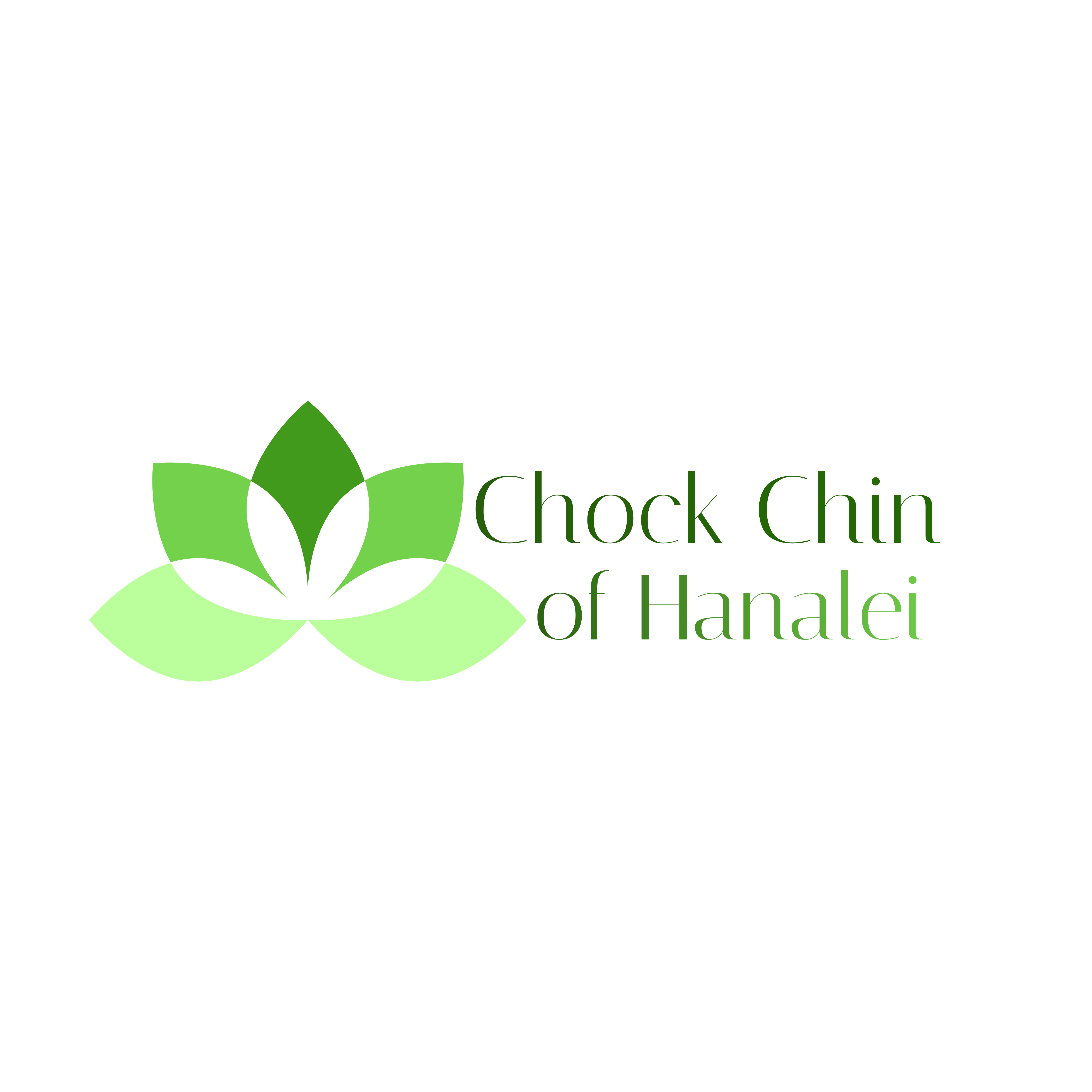By Louise Skyles
Tong Yee Aii唐綺
According to the Tang Zi Ying Jiapu:
Tong Fu Jin 唐富錦 (1820-1861), also known as Tong Yee 唐綺 (Tong Yee Aii), married Miss She 佘氏 (1826-1862), and they had a son Yishan益善 (Hawaiian name: Tong Chong)
The Chinese family members evidently did not know about Tong Yee’s Hawaiian daughters, and the Hawaiian daughters did not know about their half-brother in China. I found two pieces of information in the clan records that connected them together.
Tong Yee married Miss She 佘 in China before he went to Hawaii. Since “She” was a rare surname, I realized I had another way of looking for him already at hand. During earlier research on Susan’s female ancestors, I had obtained the Zupus from both the Tang and She clans. So I was able to search for him in both. I looked up Yee’s name in She Zupu. Bingo! He was listed as a son-in-law in She Zupu. Fortunately, in both zupus, Tong Yee got his full name listed, (although Miss She was only called Miss She).
Here is Tong Yee’s name as it appears in the Tang Jiapu. See yellow highlight.

Tong Yee’s name in Tang Jiapu
Here is the Tong Yee’s name listed as the husband of Miss She, in the She Zupu.
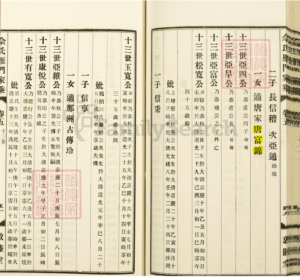
Tong Yee as son-in-law in She Clan Zupu
Tong Chong (1846-1888) married Miss Lu 盧氏 (1847) and took a concubine Miss Wu 吳氏 (1860-1898). The eldest son Qian Guang 謙光was also known as Tong Phong 唐雄, the son of Miss Wu.
Tong Phong (1865-1958) married Miss Zhuo 卓氏 (1869). They had two sons, the first son Guan Cheng 觀成 (Hawaiian name: Tin Y. Tong), the second son Guan Zheng 觀政
Tin Y Tong (1887) married Miss Liang 梁氏 (1894) and had four children Mae, Eddie, Bow Chi, and Rose.
Tong Yee Aii was the grandfather of Tong Phong who opened the first Chinese bank in Hawaii and spent most of his wealth to help Sun Yat Sen. Aii was born in Tangjia Village in 1820, married to Miss She of Guan Tang, and had a son named Tong Chong. Tong Yee left his wife, son, and hometown to pan for gold in San Francisco in 1849, and arrived in Hilo in 1850.
To help benefit his sugar plantation business, he married a Hawaiian woman like many of the local Chinese did. His wife, Kahaole’au’a (1835-1882), was the daughter of a Hawaiian chief. At that time, according to Hawaiian law, those who married Hawaiian women were required to be naturalized.
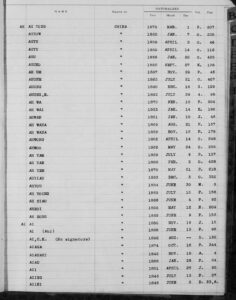
Naturalization record of Tong Yee – Hawaiian citizenship in 1851
After the 31-year-old Tong Yee Aii married 16-year-old Kahaole’au’a, the two had five daughters:
- Hattie Aana Aii (1852-1911),
- Emma Aima Aii (1854-1935),
- Jessie Alai Aii (1856-1939),
- Lizzie Elizabeth Aii (1859-1913),
- Mihana Kalaniwahine Aii (1864-1928)
NOTE: According to the Tang Jiapu, Tong Yee died in 1861, but according to a 1931 newspaper article, Tong Yee died in 1862. Nevertheless, his fifth daughter was born in 1864, so something is not correct in some of these sources.
During the time in Hilo, Tong Yee, John Ena 曾尚賢, and Akau 鄧秋 cooperated to operate Pauka’a sugar plantation (later acquired by the neighboring Onomea sugar plantation).
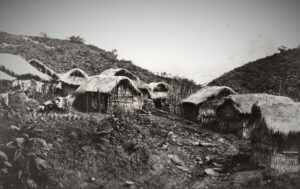
Hilo Sugar Plantation laborers’ houses in 1880
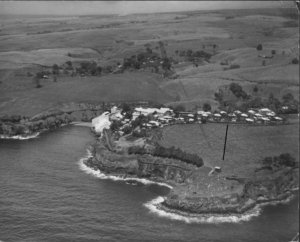
Onomea Sugar Plantation in 1935
Because of this, Tong Yee became known as a sugar master in the local Hilo area. He was also a very skillful carpenter. To improve the tools for better sugar production, he went into the Hawaiian forest and cut down a huge Ohia tree from which he created large wooden tools for sugar production. Such innovations enabled the Pauka’a sugar plantation to become the first sugar plantation to efficiently and successfully produce cane sugar.

Giant Ohia Tree
Due to skillful and excellent management, the sugar plantation developed and prospered. Tong Yee and his wife built a house in Kukuau, on two acres of land. According to the description of the descendants of Kahaole’au’a, they believed that Tong Yee left Hawaii and returned to his hometown shortly after the birth of the fifth daughter and never returned to Hawaii, which they speculated might have been because he had no son.
However, research shows this probably wasn’t what happened. According to the descriptions of the grandchildren of Tong Phong in a 1931 newspaper article, after Tong Yee’s death in 1862, his remains and part of his wealth were sent back to Tangjia Village in China. This made it possible for Tong Chong, the first son of Tong Yee and Miss She, to come to Honolulu in 1868.

Tong Yee’s Chinese descendants
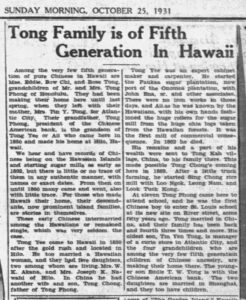
Tong Yee’s story in 1931 article
Tong Yee’s son from Tangjia Village:
After a period of time in Hawaii, Tong Chong joined the rice plantation and became one of the shareholders of the Sing Chong Company.
Sing Chong was the earliest and largest rice company in Hawaii. At that time, 50% of the rice in Hawaii was produced by Sing Chong, and it was sold both internally and externally. However, by 1929, the rice actually had to be imported to Hawaii.
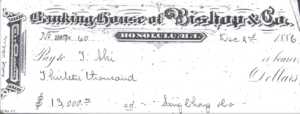
Sing Chong Company check to Tong Aki – 1888
In its heyday, Sing Chong’s production of rice was so huge, the operation covered more than 4,000 acres when the fields were in full operation. But by 1929 it was declared closed.
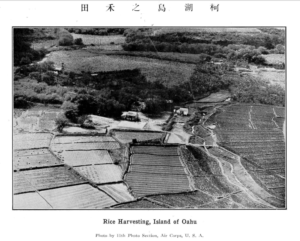
Rice plantation in Oahu – 1929
Tong Yee’s Hawaiian daughters:
After Tong Yee’s death, his beloved Hawaiian wife, Kahaole’au’a, remarried a Hawaiian. Here is her gravestone.
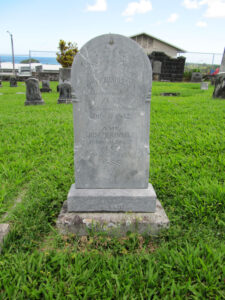
Tong Yee’s Hawaiian wife’s tomb
The two raised five daughters together. In 1872, the eldest daughter, A’ana, married Charles Cash. In 1878, the third daughter, A’lai, married Leong Suk Kam (Hawaiian name: Akamu). In 1881, the second daughter, A’ima, married Joseph Kaho’oluhi Nawahi. Joseph served as a member of the Hawaii Congress for nearly ten years.
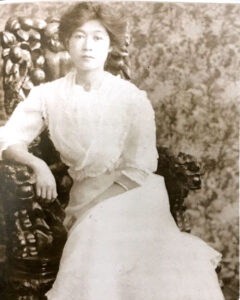
A’ima – Tong Yee’s 2nd daughter
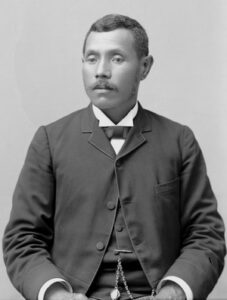
A’ima’s husband, Joseph Kaho’oluhi Nawahi
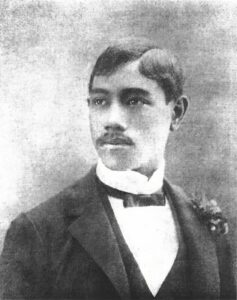
A’ima’s son Albert
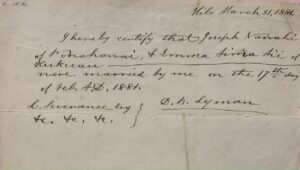
A’ima and Joseph’s marriage certificate – 1881
In 1889, A’lai and her husband Leong Suk Kam (Akamu) took their three children back to Lung It Tao, Duck Doo to visit relatives, leaving their eldest daughter Annie at a friend’s house in Hawaii. A’lai arrived in Akamu’s hometown. Akamu had a Chinese wife at home, and the two wives got along well.
Sadly, Akamu died 18 months after returning home. A’lai had to leave their son in China in the care of the Leong family to continue the heritage of Akamu within the clan, and left China with only their two daughters.

A’lai – Tong Yee’s 3rd daughter

A’lai and 1st husband Leong (Akamu) and children
A’lai returned to Hilo, because she had bought a piece of land before, which was enough to survive on without a husband. She ran a handicraft store, and there was a coffee shop next door to her. The owner of the coffee shop was Wong Kun Akana, a famous local Chinese gentleman. The two got acquainted and married.
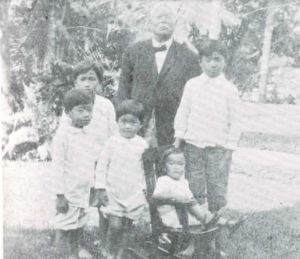
Wong Kun Akana and A’lai’s grandchildren in 1915

A’lai and children
Wong Kun Akana/Huang Gen 黃根
Hawaiian name: Wong Kun/Kwan Akana, or W K Akana
Born in 1846, Akana supported Sun Yat-sen’s revolution and was one of the main cadres of the Hilo branch. Sun Yat-sen visited Hilo several times, sometimes staying at Akana’s house. Sun wrote to Akana several times.

Sun Yat Sen greeting Comrade Hilo
Lin Sen 林森 also referred to Akana as Genbo (meaning Uncle Gen) in his letter. Lin Sen was the chairman of the national government of the Republic of China.

Lin Sen wrote to Comrade Hilo and WS Akana
In February 1896, Akana and A’lai had a daughter, Kuualoha Akana. Akana had been married a number of times previously, and had several other children.

Kuualoha Akana’s birth certificate
Akana’s coffee shop operated for nearly 20 years, between 1888-1906. Many long-time residents cherished fond memories of it, reminiscing about it through 1940. As they recalled, by 5 o’clock in the morning, the coffee shop was already crowded. Accompanied by delicious coffee and tea, locals loved to congregate there to discuss Sun Yat-sen’s revolution and talk about their lives in Hawaii.
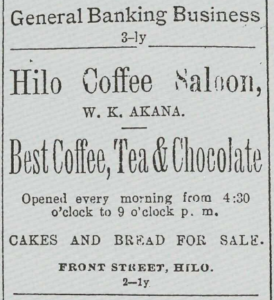
Ad for Akana’s famous Hilo Coffee Saloon
Some time after 1927, Akana felt that his time had come to the end, so he chose to leave his wife and family, and sail back to his hometown to die. He had not visited his hometown for nearly 30 to 40 years, and no one at this point seems to remember exactly where his hometown was, but returning to his roots was his last wish.
Everyone stood at the pier to see Wong Kun Akana’s ship sail away, and once again, A’lai had lost her beloved partner.
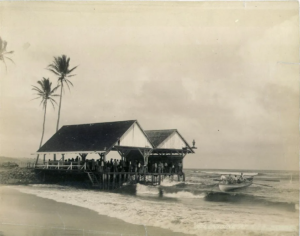
Hilo Wharf – 1890
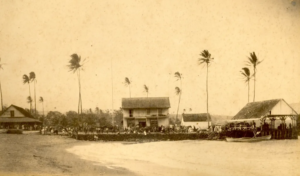

Hilo Bay Pier- about 1915
